
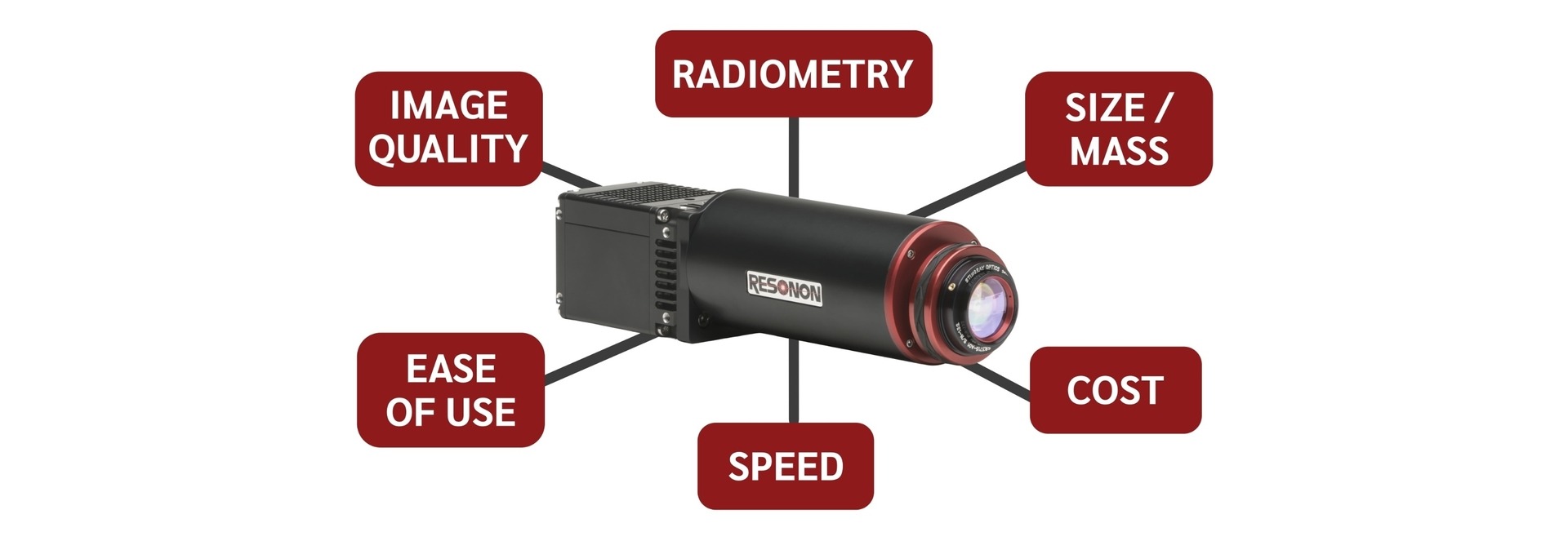
Beyond the Datasheet: Choosing the Right Hyperspectral Camera
By Dr. Rand Swanson, CEO - July 3, 2024
As previously discussed, Resonon offers feasibility studies using customer
samples. This is the most reliable way of determining if a hyperspectral camera
will meet your needs.
If you are just beginning your search for a hyperspectral camera and
sending samples is not an option, you will likely begin by reviewing
datasheets. Just as other hyperspectral camera manufacturers do, Resonon
provides a detailed data sheet for each of our hyperspectral cameras. In
principle, a datasheet enables customers to compare our products with our
competitors’ products. In practice, a comparison of data sheets can often be
misleading. What truly matters is knowing whether or not the chosen hyperspectral
camera will meet your needs.
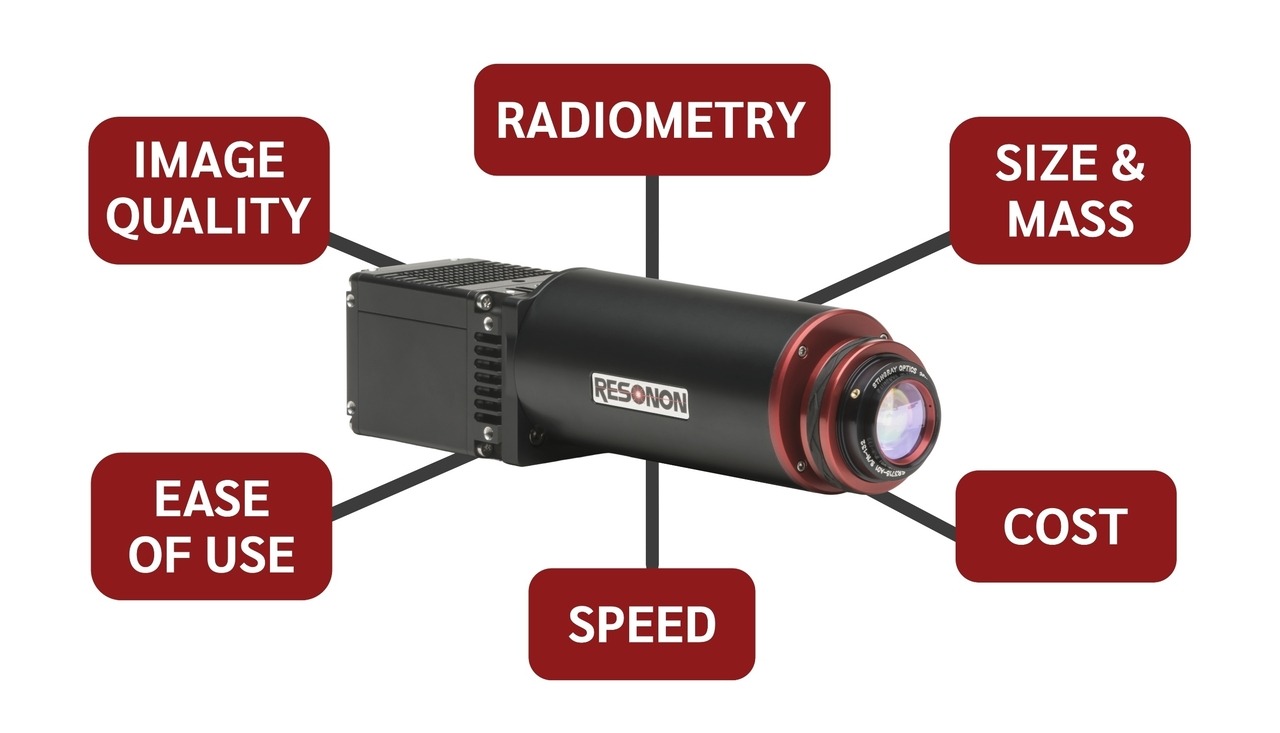
Figure 1: Key hyperspectral camera attributes for most hyperspectral imaging customers.
The image above highlights the key attributes that are most relevant to
many of our customers. Each attribute is a component within our design trade
space. The ideal camera depends on the specific problem you are trying to solve
(or opportunity you want to seize), and will usually be determined by a subset
of these attributes.
Image Quality
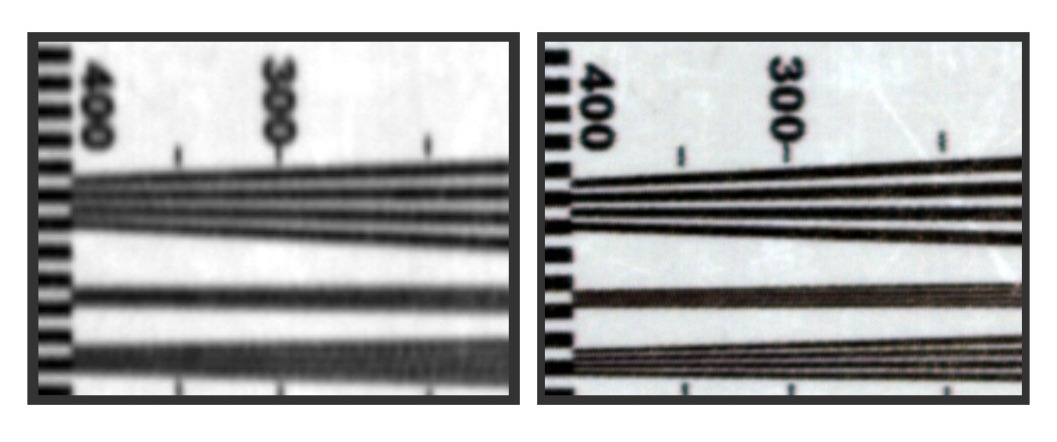
Figure 2: The image on the left was recorded with a competitor’s hyperspectral camera and the image on the right was recorded with a Resonon Pika XC2 hyperspectral camera.
Image quality is crucial for some applications, but less
so for others. If objects of interest are relatively large and fill a
substantial portion of the field of view, high-resolution imaging may not be critical.
But, for small features, image quality is essential.
The quality of an image is characterized by the instrument Modulation
Transfer Function (MTF), which is typically not provided on datasheets and is
also not particularly intuitive. Sample images, as discussed in this blog, are an easy way to visualize the image quality provided by our
hyperspectral cameras.
Radiometry
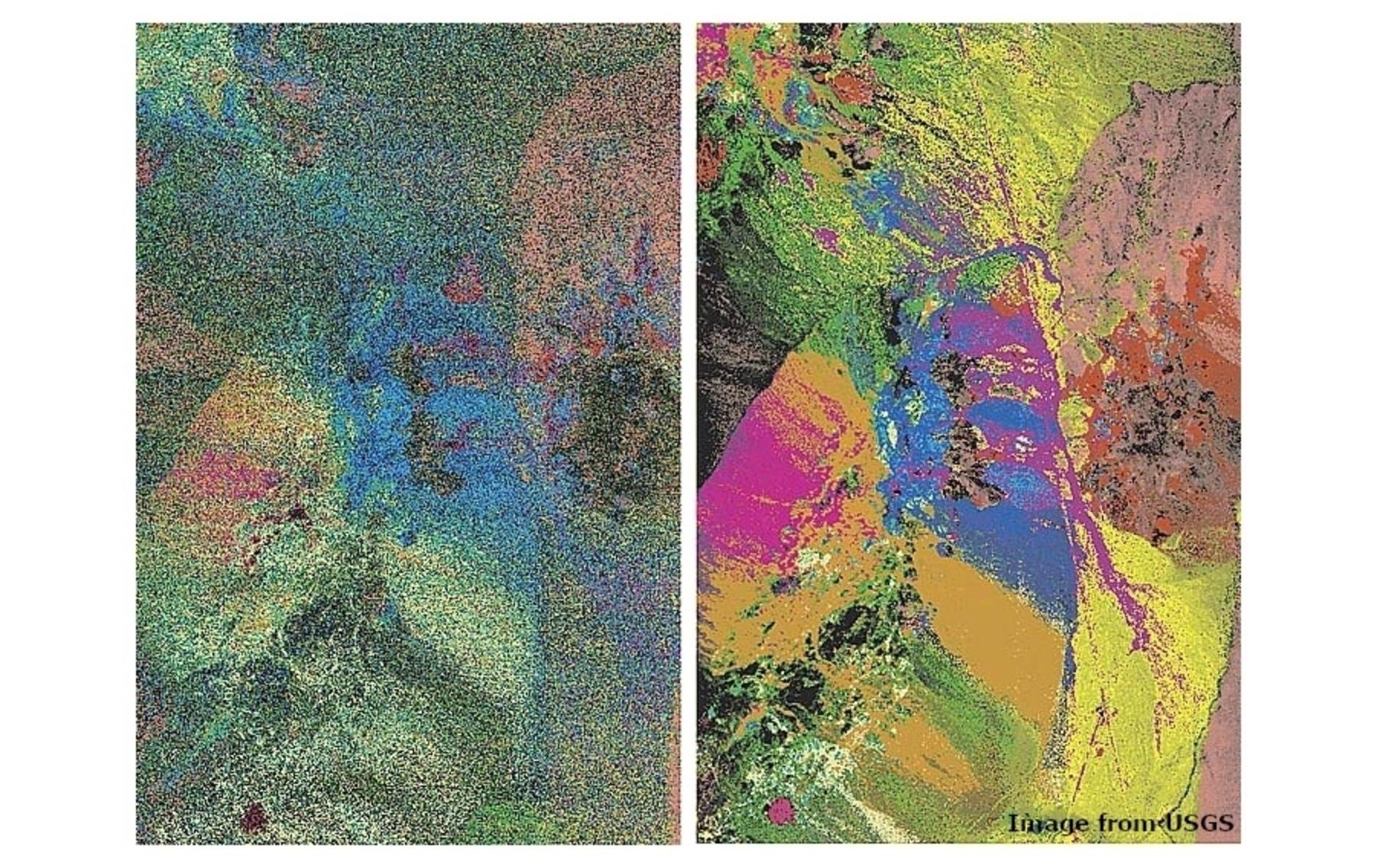
Figure 3: Mineral classification maps created from NASA AVIRIS hyperspectral data. Image on the right (after instrument upgrade) shows 4X improvement in SNR as compared to image on the left. Image courtesy of USGS1.
Radiometry is how well the instrument collects light, which in turn
impacts the Signal-to-Noise Ratio (SNR). An in-depth explanation of SNR of hyperspectral
cameras is here.
Most datasheets report a single SNR value, even though SNR varies across
the camera’s wavelength range. To help our customers make an informed decision,
Resonon provides SNR plots for all our cameras.
Radiometry is probably the least obvious important characteristic for
many applications. It is more important for hyperspectral cameras than for
conventional cameras because a hyperspectral camera divides the signal into
many more spectral channels, lowering signal levels. Light-starved data are
noisy, diminishing the advantages of additional spectral information provided
by hyperspectral cameras.
Additional illumination or slower scan speeds can increase the SNR. However,
in situations liked crewed airborne acquisitions, illumination and scan rates
are fixed, as adding more sunlight or flying slower than the aircraft's stall speed are
not possible. Our feasibility studies help you understand the illumination and
scan speeds necessary to achieve the SNR required for your application.
Speed

Figure 4: Some hyperspectral applications require “cheetah-like” speed, while others do not.
In our hyperspectral line-scan cameras, the camera speed
(aka maximum frame rate) is closely linked to image quality.
If an object is scanned using a
camera that is too slow, the image will be blurred and/or stretched in one
dimension.
In some cases, you can just slow down the scanning speed. In others, like scanning
materials on a high-speed conveyor belt, slowing down is not an option and
speed becomes a critical factor. Finally, for some applications, like airborne
imaging, excess camera speed is effectively wasted because the amount of light available
typically determines the maximum data acquisition speed.
This table provides the maximum framerate for all our
hyperspectral cameras.
Size / Mass and Cost

Figure 5: Size, mass, and cost are easily available in camera datasheets and quotes.
These characteristics are provided by datasheets and quotes and are easy
to understand. Size and mass are critical for applications like airborne drone deployment,
but less important for machine vision or laboratory use.
Cost is nearly always
a consideration, of course.
Ease of Use
Ease of use encompasses hardware, software, and customer service, and it
is ALWAYS important.
Our goal is to have you collecting and using hyperspectral data as soon as
possible. This includes providing all necessary components, clear assembly
instructions and quick-start guides, and hardware designed for intuitive setup
and adjustment. We even offer fully-integrated
airborne systems with the drone included to eliminate integration burdens
for the end-user.
Software ease of use is not a characteristic readily explained on a datasheet. To
address this, Resonon provides free Spectronon
software and example datacubes. Detailed user manuals, quick-start guides,
and tutorial videos are available here
to help you get started. For industrial customers and teams who gather large
volumes of data, our RVS page
features videos demonstrating the user-friendly design.
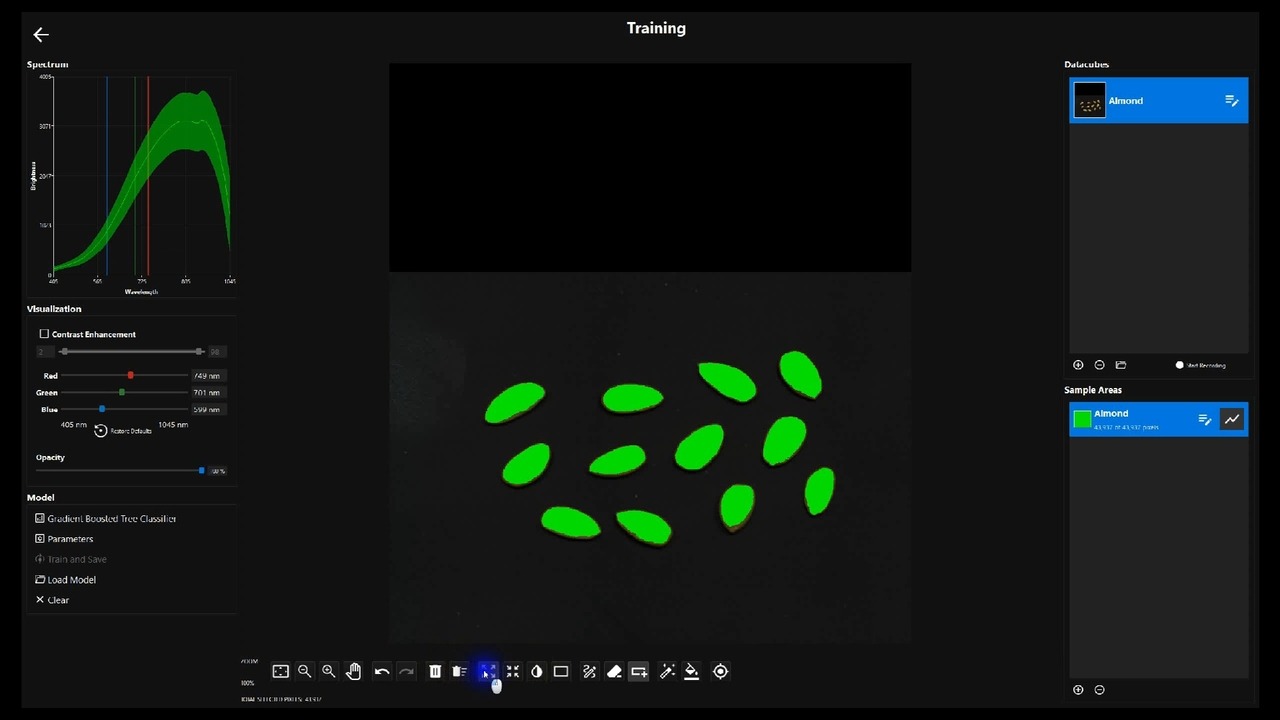
Figure 6: A training screen in Resonon’s Real-time Vision System (RVS) software. Simple, straightforward tools combined with supplemental video tutorials and user manuals help bring customers up to speed with Resonon software quickly.
Even with all the effort we've put into making our hardware and software user-friendly,
questions do sometimes still arise. Resonon customer support is fast, thorough,
and dedicated to helping you successfully use our products.
What About All of the Other Specifications?
You may have noted that some of the commonly-touted hyperspectral camera specifications,
such as distortions and spot sizes, were not listed as key attributes. These specifications
do a play major role in instrument performance, and we don’t want to diminish their
importance.
However, for most customers trying to choose the right hyperspectral
camera for their application, direct comparison of these types of specifications
is less relevant than the six key attributes we’ve highlighted here.
References
1. Effects of spectrometer band pass, sampling, and signal-to-noise ratio on spectral identification using the Tetracorder algorithm.
Swayze,
Contact us
If you’d like to discuss the attributes most important to your application, please reach out to a member of our Sales Team.
Contact us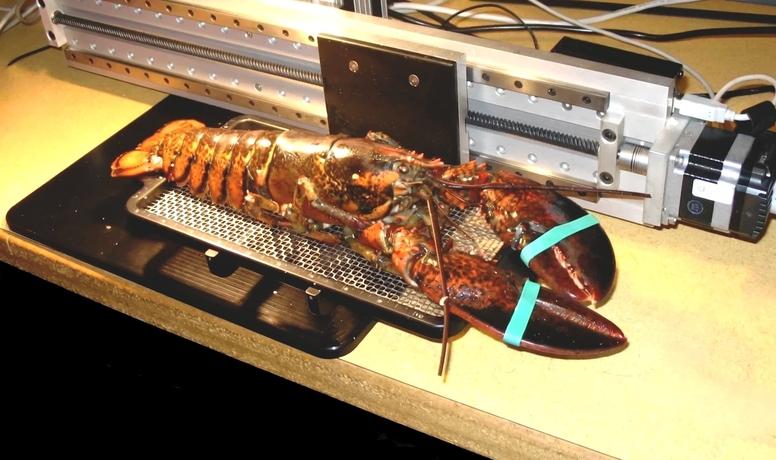
Basics Application
Will Hyperspectral Imaging Work for My Application? May 30, 2024

Basics Machine Vision
Getting Started with Hyperspectral Machine Vision SystemsJanuary 10, 2024
Contact Us
Click below and our hyperspectral experts will contact you soon.
Complete Hyperspectral Imaging Solutions
Contact
Resonon Inc.123 Commercial Drive
Bozeman, MT 59715 USA
